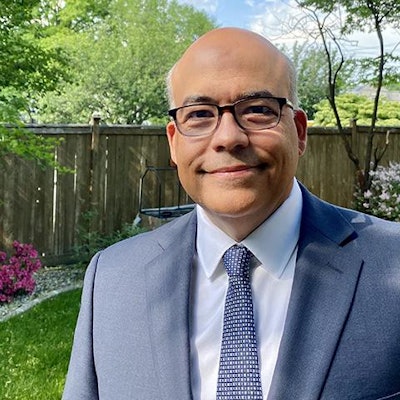Since 1804, the New-York Historical Society (New-York Historical) and its stewards have been preserving and showcasing history. For the past three years, it’s been teaching others to do the same, seeking to expand what the face of museum studies looks like. Dr. Valerie Paley
Dr. Valerie Paley
Through a partnership with the City University of New York’s School of Professional Studies (CUNY SPS), New-York Historical has been teaching CUNY students the ins and outs of museum operations via a graduate degree in Museum Studies program.
One of the core goals of the program – it was launched in 2019 – is to diversify museum staff, which then may affect museum curation, said Dr. Valerie Paley, Senior Vice President and Sue Ann Weinberg Director of the Patricia D. Klingenstein Library at New-York Historical.
"Through the CUNY SPS, which is historically tapped into a more diverse community of students – and professional studies in particular, these are sometimes people who are looking to make career changes,” said Paley, who oversees the program on behalf of the American museum and library. “And we thought there was just a perfect opportunity for us to use our own staff resources and intellectual capital to imagine what kind of program would help train such new cadres of scholars and museum professionals in an MA setting."
And the diversity that New-York Historical wants to foster and accommodate goes beyond race, Paley said, which is reflected in the course curriculum.
"When we thought of diversity, we weren't necessarily thinking only about gender, racial, ethnic, or socioeconomic diversity, but also matters including disability studies, for example," Paley said.
Such inclusions are part of the program’s more holistic approach to museum studies, Paley said.
A lot of the time, when people think of the work that goes on in museums, they think about curation, what's the exhibition,” Paley said. “But in fact, the function of a museum is way broader than just the exhibition. We take an approach that includes public programming, education K-16 and beyond, how we roll out online curricula, how we do social media, blogs, everything else. We're taking a very holistic approach to the museum experience, and that's how we try to train our students.
"What we try to do is also incorporate finance, development, public programming, visitor services, disability studies, as well as what you would expect, the curation and education. So I think that [students] come away with a very well-rounded sense of what goes into museum operation.”
The degree program is taught mostly online, and applicants must have a bachelor’s degree from an accredited institution, with a GPA of 3.0 or higher on a 4.0 scale. The program has more than 140 students currently enrolled, and 44 students have graduated from the program to date.
 Jorge Silva-Puras
Jorge Silva-Puras
Although CUNY ultimately confers the degree, Paley stressed just how involved New-York Historical is in the course development of the program.
“We very much have developed the curriculum, are working in a real collaborative partnership with CUNY, and where possible, we use our own working professionals as professors, myself included,” Paley said, adding that the majority of professors in the program are full-time working professionals at New York Historical.
For example, the course on museum administration is currently taught by the New-York Historical’s CFO, said Jorge Silva-Puras, interim dean of CUNY SPS.
Puras said that SPS’s student population consists of almost 70% students of color. And that rich diversity, along with New York City’s status as a cultural and historical hub, lends itself to being a good fit for a museum studies program, he said.
The program also offers non-traditional students an accessible and affordable pathway into the field, Puras said.
“We are very focused on increasing accessibility to a diverse population of students -- whether it's African American, Latino, Asian, multiracial,” Puras said.





















